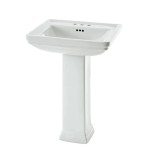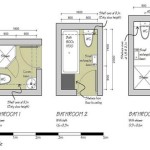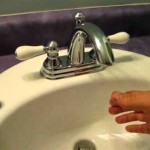How To Replace a Bathroom Fan Vent
Replacing a bathroom fan vent is a common home improvement task that can significantly improve air quality and reduce moisture buildup in the bathroom. A functioning vent eliminates steam and odors, preventing mold growth and protecting the bathroom's structure. While a professional can handle this job, a homeowner with basic DIY skills can accomplish it safely and effectively with the right tools and information.
This article provides a comprehensive guide to replacing a bathroom fan vent. It covers the necessary tools, safety precautions, step-by-step instructions, and considerations for choosing a new vent. Before beginning, ensure a thorough understanding of the steps involved and the potential challenges. Electricity is involved, so exercising utmost caution is crucial.
### Planning and PreparationPrior to starting the replacement process, careful planning and preparation are essential. This phase includes assessing the existing vent, selecting a suitable replacement, and gathering the necessary tools and safety equipment. Neglecting this stage can lead to complications and delays during the installation.
The initial step is to inspect the existing bathroom fan vent. Note its size, type, and how it is mounted to the ceiling and connected to the ductwork. Determine if the existing vent is connected to ductwork that exits through the roof or the wall. Taking measurements of the existing housing will help ensure the new vent will fit properly. Pay attention to the vent's noise level; fans are rated in sones, with lower numbers indicating quieter operation. If noise is a concern, consider a replacement with a lower sone rating.
Selecting a replacement vent involves considering several factors. The most important is ensuring the new vent has the correct cubic feet per minute (CFM) rating for the size of the bathroom. A general guideline is to choose a vent with at least 1 CFM per square foot of bathroom space. For example, a 50-square-foot bathroom would require a vent with a CFM rating of at least 50. Also, check the duct size compatibility. The duct size leaving the vent should match the existing ductwork in the ceiling or attic. If there is an existing smaller duct and you are installing a larger vent, an adapter may be needed.
Gathering the necessary tools and materials is also crucial. A list of essential items includes:
*New bathroom fan vent
*Screwdriver (Phillips and flathead)
*Pliers
*Wire strippers
*Wire connectors (wire nuts)
*Utility knife
*Tape measure
*Pencil
*Safety glasses
*Gloves
*Ladder
*Duct tape or foil tape
*Drywall saw or utility knife for enlarging the opening (if necessary)
*Voltage tester
Safety is paramount. Before commencing any work, turn off the power to the bathroom fan circuit at the main electrical panel. Verify that the power is off using a voltage tester. Wear safety glasses and gloves throughout the process to protect eyes and hands. Using a sturdy ladder is also essential to avoid falls.
### Removing the Existing Bathroom Fan VentOnce preparations are complete, the next step involves safely removing the existing bathroom fan vent. This process requires patience and care to avoid damaging the ceiling or electrical wiring. Take extreme caution when disconnecting any wires.
Begin by removing the vent cover. Most covers are held in place by spring clips or screws. Gently pull down on the cover to locate the clips or identify the screws. If there are clips, squeeze them together to release the cover. If there are screws, unscrew them and carefully lower the cover.
With the cover removed, the fan housing is exposed. Locate the electrical wiring connected to the fan. Before disconnecting any wires, use the voltage tester again to ensure the power is off. Disconnect the wires one at a time, using wire strippers to remove the insulation if necessary. Use wire connectors (wire nuts) to cap off the exposed ends of the wires to prevent accidental shock. Label each wire before disconnecting it (e.g., with masking tape and a marker) to ensure proper reconnection later.
Next, detach the fan housing from the ceiling. This may involve removing screws or clips that secure the housing to the ceiling joists. In some cases, the housing may be attached with nails, which require more effort to remove. Use a screwdriver or pliers to carefully remove these fasteners. If the housing is caulked in place, use a utility knife to score around the edges to break the seal.
Once the housing is detached from the ceiling, carefully lower it. Be mindful of the ductwork connected to the fan. Disconnect the ductwork by loosening the clamp or removing the tape that secures it to the vent. If the ductwork is rigid, it may require some maneuvering to detach it. After the ductwork is disconnected, remove the old fan housing completely, being careful not to damage the existing ductwork.
Inspect the ceiling opening for any damage. If there are any rough edges or gaps, trim them with a drywall saw or utility knife. Clean the area to remove any dust or debris. This will allow the new fan housing to sit flush with the ceiling.
### Installing the New Bathroom Fan VentThe final step involves installing the new bathroom fan vent. This process requires careful attention to ensure proper mounting, electrical connections, and ductwork attachment. Take extra safety precautions when working with wiring and climbing on a ladder.
Carefully lift the new fan housing into place, aligning it with the existing ceiling opening. If the opening is too small, use a drywall saw or utility knife to enlarge it slightly. Ensure the housing fits snugly against the ceiling. If there are any gaps, they can be filled with caulk later.
Secure the fan housing to the ceiling joists using screws or mounting brackets, as provided by the manufacturer. Ensure the housing is securely attached to prevent it from vibrating or falling. Use a level to ensure the housing is aligned properly before tightening the screws.
Reconnect the ductwork to the new fan vent. Slide the ductwork over the vent outlet and secure it with duct tape or foil tape. Use foil tape for a more durable and airtight seal. Ensure the ductwork is properly aligned and that there are no kinks or bends that could restrict airflow. The connection must be secured properly, as a leak will not only diminish the effectiveness of the fan, but may also allow warm, moist air to escape into the attic.
Reconnect the electrical wiring to the new fan vent, matching the wires according to the labels or wiring diagram provided by the manufacturer. Typically, there will be a black (hot) wire, a white (neutral) wire, and a green or bare copper (ground) wire. Use wire connectors (wire nuts) to securely connect the wires, ensuring that no bare wire is exposed. If the wiring configuration is unfamiliar, consult with a qualified electrician.
Once the wiring is connected, carefully tuck the wires into the fan housing, ensuring they do not interfere with the fan blades or other components. Replace the fan cover, securing it with the spring clips or screws. Ensure the cover is properly aligned and securely attached.
### Testing and Final TouchesWith the new bathroom fan vent installed, it is important to test its operation before completing the job. This will help identify any issues early on and prevent future problems.
Turn the power back on to the bathroom fan circuit at the main electrical panel. Switch on the fan and listen for any unusual noises or vibrations. Ensure the fan is operating smoothly and that air is being drawn into the vent. Check the airflow at the exterior vent location to ensure proper ventilation.
Inspect the ceiling around the fan housing for any gaps or cracks. If any are found, fill them with caulk to prevent air leakage and moisture intrusion. Clean up any debris or tools from the work area. Dispose of the old fan housing and packaging materials properly. By following these steps, the homeowner can ensure proper ventilation in the bathroom, preventing moisture buildup and potential mold growth.

Installing A Bathroom Fan Fine Homebuilding

How To Replace A Bathroom Fan With Pictures Wikihow

How To Install A Bathroom Fan Step By Guide Bob Vila

Venting A Bath Fan In Cold Climate Fine Homebuilding

How To Install A Bathroom Exhaust Fan

How To Install A Bathroom Fan Homeserve Usa

How To Install A Bathroom Fan Diy Family Handyman

How To Install A Bathroom Fan Ask This Old House

Blog

How To Replace Or Install An Easy Bath Fan The Home Depot







